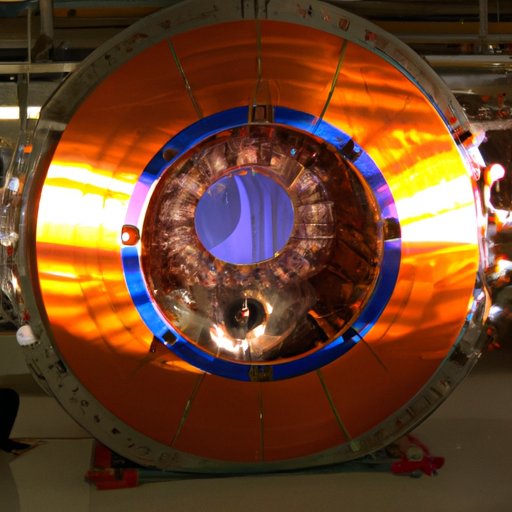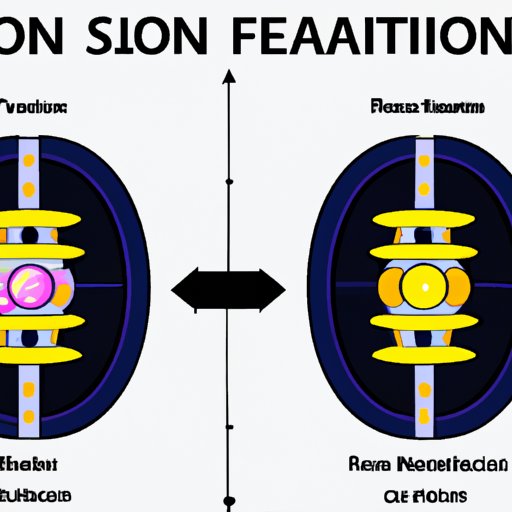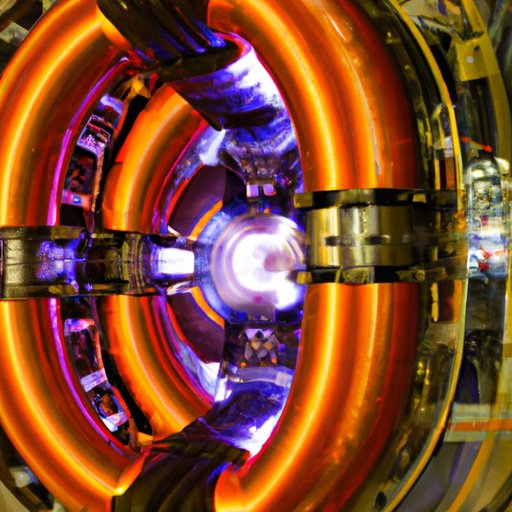Introduction
A fusion reactor is a type of nuclear reactor that generates energy through fusion reactions. This process involves the merging of two atomic nuclei to form a heavier nucleus, resulting in the release of large amounts of energy. It is the same reaction that powers stars such as our sun. While the idea of using fusion as an energy source has been around for decades, only recently have scientists and engineers made significant progress in developing a practical fusion reactor.
In this article, we will explore the science and technology behind fusion reactors and how they function. We will also examine the components of a fusion reactor, as well as compare them to traditional fission reactors.
How Nuclear Fusion Reactors Function
At the core of a fusion reactor is the fusion reaction, which is triggered by a high-energy particle collision between two atoms. When this happens, the particles combine and form a new atom with a higher mass than the original two particles. This process releases a large amount of energy, which can be harnessed and used as an energy source.
The key to making a successful fusion reactor lies in controlling the reaction. To do this, scientists and engineers use a number of safety and efficiency measures. These include using strong magnetic fields to confine the plasma, as well as using fuel supplies that are carefully monitored and regulated.

Examining the Components of a Fusion Reactor
The components of a fusion reactor are designed to ensure the optimal performance of the reactor. The most important components are the magnetic confinement system, the fuel supply, and the heat exchangers.
Magnetic Confinement
The magnetic confinement system is a key component of any fusion reactor. This system uses powerful magnets to contain and control the plasma, which is necessary for the successful operation of the reactor. The strength of the magnetic field must be strong enough to contain the plasma, but not so strong that it disrupts the fusion reaction.
Fuel Supply
The fuel supply is another important component of a fusion reactor. The fuel used in these reactors is typically a combination of deuterium and tritium, two isotopes of hydrogen. The fuel must be carefully monitored and regulated to ensure efficient operation of the reactor.
Heat Exchangers
The heat exchangers are a critical part of any fusion reactor. They are responsible for transferring the heat generated by the fusion reaction into usable energy. Heat exchangers come in a variety of designs, but all are designed to efficiently transfer the heat generated by the reactor.

A Comparison of Fusion and Fission Reactors
Fusion and fission are two very different processes, and both have their own advantages and disadvantages. Understanding the differences between the two can help us better understand the potential of each type of reactor.
Differences in Process
The primary difference between fusion and fission is the process by which energy is produced. In a fission reactor, energy is released when the nucleus of an atom is split. In a fusion reactor, energy is released when two or more atomic nuclei are combined. The process of fusion is much more efficient than fission, as it produces far more energy per unit of fuel.
Differences in Output
The outputs of both types of reactors differ significantly. Fission reactors produce large amounts of radioactive waste, while fusion reactors produce no radioactive waste. Additionally, fusion reactors are much more efficient than fission reactors, producing up to four times more energy per unit of fuel.
Advantages and Disadvantages of Both
Fission and fusion both have their advantages and disadvantages. Fission is more established and cheaper to build, but the radioactive waste produced is a major drawback. Fusion, on the other hand, is much more efficient and produces no radioactive waste, but is more expensive and difficult to build.
Conclusion
In conclusion, fusion reactors have the potential to revolutionize the way we generate energy. By understanding the science and technology behind them, we can better appreciate the potential of this technology. Fusion reactors are still in their infancy, but with continued research and development, we may soon see them become commonplace.
In this article, we discussed the science and technology behind fusion reactors, examined the components of a fusion reactor, and compared fusion and fission reactors. With their potential to produce clean, efficient energy, fusion reactors are an exciting prospect for the future of energy production.
(Note: Is this article not meeting your expectations? Do you have knowledge or insights to share? Unlock new opportunities and expand your reach by joining our authors team. Click Registration to join us and share your expertise with our readers.)
